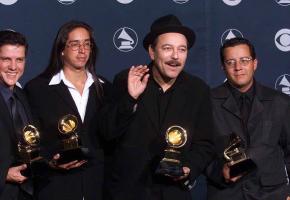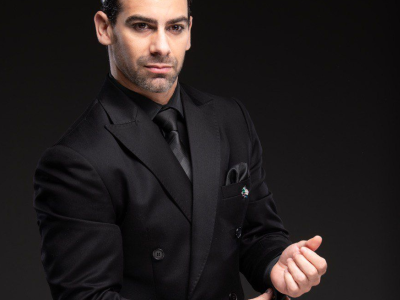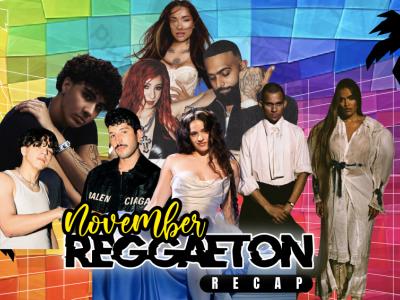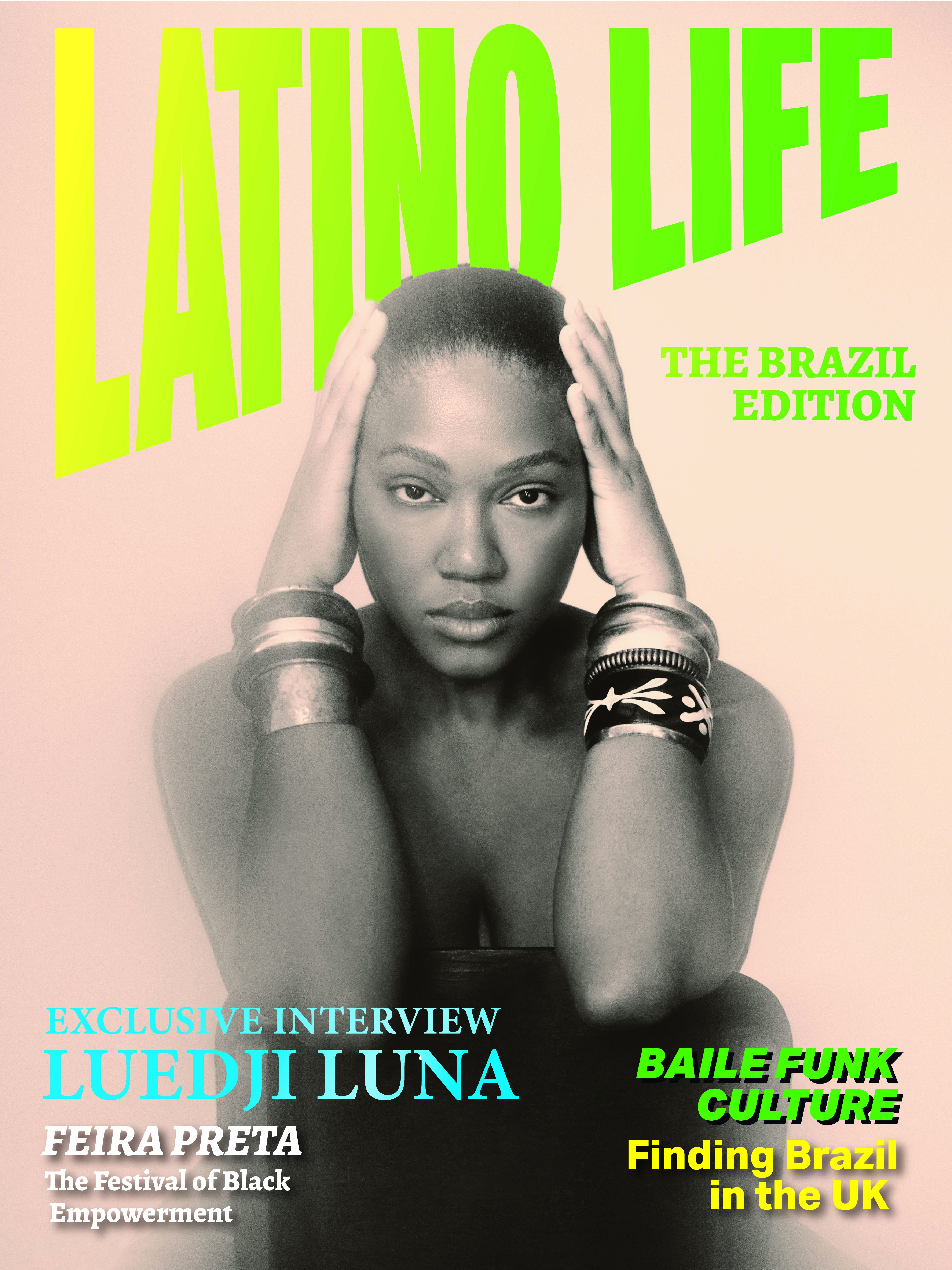The three things that strike you when you first meet Gloria Estefan, are her gorgeous milky-soft brown eyes, the fact that she is very small, and that she is very unlike a pop star.
“I love seeing magazines in print,” she enthuses, as she flicks through copies of LatinoLife, “everything is digital nowadays… I tell my daughter…’did you back up everything?’ cause you never know... for our 40th wedding anniversary I put together an album, with all our photos, so I can show my grandchildren….’Look, this was your dad when he was born’…”
As she leans towards me on the sofa, eager to chat, it feels like a gossipy afternoon with my Latina aunt; one can hardly reconcile this bubbly, fiery, warm and affectionate lady, with the global icon that was Gloria Estefan, blazing the trail for the J-Los, Shakiras and Cardi B’s to come.
Later she’ll say she never dreamt of being a super star, never sought it and, while she enjoyed it when it came, was never desperate to cling on to it. I suddenly think of Madonna, Gloria’s peer in the world of pop idolatry, who’s recent single with Maluma plants her in the realms of sugar mama to the world’s most popular Latin artist right now, and the bizarre idea that Madonna is cashing in on the very Latin music phenomenon that Gloria pioneered.
Indeed, more significant than fame in Estefan’s life, has been a man called Emilio, Gloria’s media naranja, partner for 40 years. Not only did Emilio Estefan create Gloria - the pop star - but went on to create Ricky Martin and Shakira; he is for Latin music what Quincy Jones is for black music. So, it’s no wonder that, rather than a duet with the latest Latin heartthrob, Gloria is celebrating the life of the Estefans in the form of a West End musical. ‘On Your Feet’ tells their story, from revolution and exile to fame and fortune, with the family rifts, tragedy, and enduring love of a telenovela.
Miami Days
1959. Picture a little dark haired girl, age 3, being dragged around the sleepy suburbs of Miami by her mother, having left their home in Cuban, looking for a place to rent.
“One of my first memories is seeing a sign on one of the houses which said ‘no children, no pets, no Cubans’, “ she says. ”Miami was the deep South, don’t forget, a difficult place for non-white Americans. It wasn’t Latino then and the fear of the Cuban invasion was just beginning.”
“We had nothing when we came to Miami,” Gloria continues. “the Cubans ripped up my mum’s degree when she left so she couldn’t get a decent job and my father was still in prison in Cuba.”
Gloria’s father joined them when she was 6, but not long after, went to fight in Vietnam. When he returned, he contracted Multiple Sclerosis, which was later proved to be caused by exposure to Agent Orange, a poisonous chemical used by the US Army in Vietnam. While her mother worked, Gloria took care of her father throughout her teens, until he died 14 years later, when Gloria was 23.
“Since it wasn’t proven that his MS was caused by Agent Orange we didn’t get the maximum benefits or any compensation from the state,” Gloria says. “My mum worked as a clerk in a school. The government gave us a nurse till 3pm every day, when I returned from school and I would stay with my dad till my mum came home, and then at night, when she would go to university. I was a good girl.”
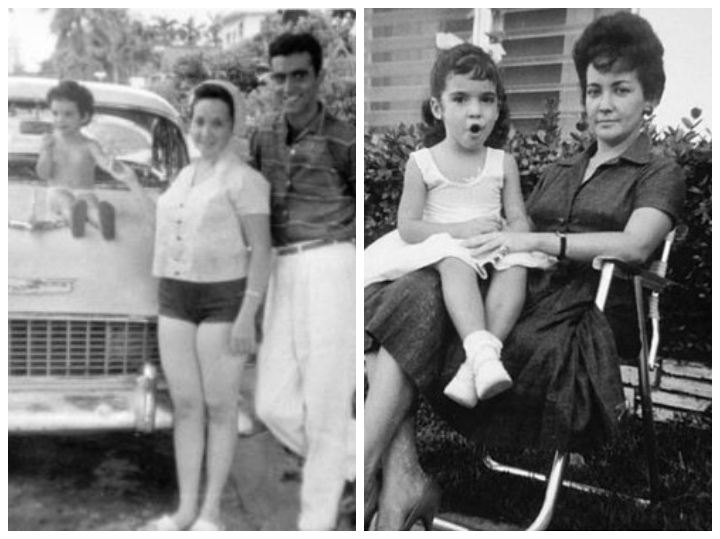
Music was Gloria’s escape. “I’d always had a musical ear. My parents told me that in Cuba during the revolution, even before I could talk, they would find me singing the revolutionary anthem, which would make my mum furious, because both my father and my grandfather were in jail.”
In Miami, Latin music continued to fill Gloria’s life
“I grew up on Celia Cruz, Cachao and the Mexican boleros of Javier Solis and Los Panchos. And then of course, the Beatles invaded my life.”
So Beatlemania, not the Stones? I ask
“Ooh no, Beatles all the way!…I remember hearing Ferry cross the Mersey when I was 7, I was obsessed with that song. And now I realise that it’s actually a Bolero. You know the Beatles were super influenced by Latin music? One of their first recordings was a cover of Besame Mucho, you can see it on YouTube. Later we snatched a copy of the original demo out of Phil Collin’s hands. I also loved Carol King, Elton John, Stevie Wonder, the whole Motown thing…I loved soul music.”
But Gloria insists she never even contemplated a career in music
“I never wanted to be the centre of attention. I was shy. I had my dad’s personality. My mum was the diva, she had wanted to be a performer herself but her father put a stop to it. That kind of career was not for nice girls. She was ambitious for me but not in music. I was set on being a psychologist. Singing was a very personal thing. So when I joined Emilio’s band at 17 my mum was not a happy camper.”
Falling in love
It wasn’t love at first sight, insists Gloria
“The first time I met Emilio, I was at a party that a friend threw for his parents; he asked me to sing for them. I was 15. I remember his father talking about a guy who worked at Bacardi and had a band, The Miami Latin Boys, that was doing quite well. So in comes this guy in short shorts, carrying the accordion. And from where I was sitting, he looked like he was naked, because all I could see was legs and an accordion…”
“A few months later, my mum drags me to a wedding and Emilio was there playing the accordion. That’s when I saw his charisma, everyone was having a blast dancing, and took notice of him. Later on in the night he said: ‘aren’t you that girl who was singing at that party?’ and asked me if I wanted to sit in and sing with the band. I sang ‘Sabor a Mi’ and got a standing ovation.”
“At the end of the night he asked me to be his singer. I said my mum would kill me, and I was too busy; I studied in the morning, had 2 jobs…working at the airport as a translater and teaching guitar at community college. But deep inside” Gloria explains, “I was dying to.”
Luckily for both, Emilio was persistent.
“Two weeks later we get a phone call, ‘it’s that boy!’ my sister shouts. And Emilio is tries to convince me to join the band. I said to my mum: ‘I really want to do this it wouldn’t only be in the weekends,’ and she allowed me to. I think she felt bad because my dad was in the hospital already. Maybe thought I’d given up so much. But I don’t think she imagined it turning out how it did.”
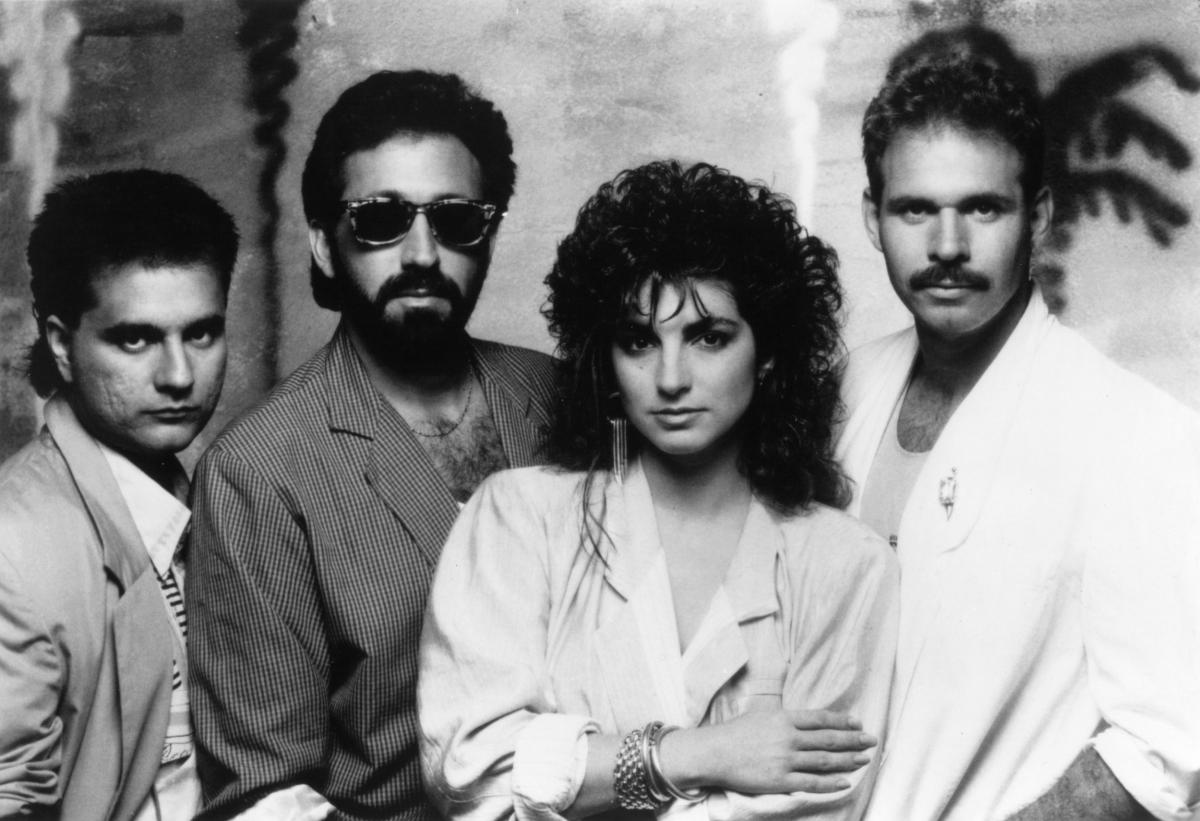
Stardom
Fame didn’t come fast; the band spent several years doing the gig rounds in Miami, with Emilio hustling for record deals. But when success came it was furious. In 1984, signed to Columbia, Miami Sound Machine got their first dance hit "Dr. Beat” followed by "Conga", which became a worldwide hit. Their 1987 album ‘Let It Loose’, featuring ‘Rhythm Is Gonna Get You’, went multi-platinum, with three million copies sold in the US alone.
But with the worldwide success of the ballads such as "Anything for You,” the appeal of Gloria as lead singer was becoming increasingly clear. Emilio decided to change the band's name to Gloria Estefan and Miami Sound Machine, and then dropped the band name altogether. By 1989, with ‘Cuts Both Ways’, her best-selling album to date, including hit singles "Don't Wanna Lose You", "Oye mi Canto," "Here We Are," "Cuts Both Ways" and "Get on Your Feet," Gloria was a superstar.
The Disaster
Just when Gloria was enjoying the dizzy heights of fame, with 8 top ten hits, disaster struck, when her tour bus collided with a truck. She was flown by helicopter to New York City, where surgeons implanted two titanium rods to stabilize her vertebral column and said she would never walk again.
But Gloria was determined. “Having gone through what we did with my dad, I knew what my family was in for, so I just thought; ‘I’m going to do everything I can do not to put them through that’.” Somehow, I learned of a discipline that I never imagined I could have, getting out of bed every morning to try and get some mobility back. It took me 4 months, before I could put my underwear on.”
Defying the doctors’ prognosis, Ten months after the collision, Gloria made her first appearance stage at the American Music Awards, to a standing ovation: “The doctor who operated nearly fainted when we invited him to the concert. He told me: ‘I operated on you I know what was in there…this was not a possibility…”
Was it a craving to get back on stage which drove Gloria in her recovery? I ask.
“I didn’t care about getting back on stage, I’d never cared about being famous and less so now…but, in a way, the accident made sense of my fame…you know when you are famous people build you up into something special, but actually it was when I became vulnerable, that I thought I could be of use, that I could inspire people, if I made it through…”
Back to Cuban Roots
They say that tragedy brings home the things that really matter. Perhaps this is why, when Gloria recovered, she decided to record an album entirely in Spanish.
“I wanted my fans to know where my music came from. When I joined Emilio’s band, we were playing Latin music, that was our music. So by releasing Mi Tierra’on one hand, and the Gloria (Greatest Hits) album on the other, I wanted to show: this (Gloria) is what I’ve done, but this (Mi Tierra) is what I am. We are this and we are that too, and everything in between.”
Mi Tierra became Gloria’s most successful album of all, selling over eight million copies worldwide—going on to become multi-platinum in Spain (10 times) and in the US (16 times), and earning the Grammy Award for Best Tropical Latin Album. Gloria adds proudly, “it’s the only record that they are still printing.”
“For Emilio and I, recording that album was probably the most personal decision we made. We were salvaging a culture we knew that would never be the same. Even the arrangements of those songs were deliberately pre-1959. Cuba had changed and we wanted the album to encapsulate a world that we’d lost but was part of us.”
The personal decision ended up being a stroke of commercial genius. I ask if the thought of capturing the Spanish-speaking audience, which was what Mi Tierra did, entered into their minds? Gloria shakes her head emphatically.
“Nothing we ever did had an end goal…if your thinking ‘oh we need to be doing this…because this is trending’ well then you are already two years late.”
Dream Team
In the next decades, Emilio would go on to produce the major Latin crossover artists of the next 10 years, including Ricky Martin, Shakira, with Gloria writing many of their songs. Indeed Shakira – the global pop star – would not exist, if it were not for the Estefans.
“Shakira didn’t want to sing in English…I fought hard for her album, the label wasn’t going to put three English songs on a Spanish album. We wanted them to succeed, because the more Latin artists that push the door open, the more it promotes our culture. For us it was Santana and Jose Feliciano…so we wanted to pass on the baton…
Now, the door has been pushed so wide open that it's the English-speaking artists who artists are needing to sing in Spanish to make hits. But again, this was not their end goal, Gloria insists.
“Actually, Emilio started producing other people to take the pressure off me. He didn't want to force me back on stage, and I loved him for that, he put his energy elsewhere. We were our own industry.”
Indeed, the Estefans are Latin Music’s Royal Family; the makers of future kings and queens. How does it work?
“He runs stuff by me when he’s working with other artists and I give him my opinions, and he certainly gives me his (laughs) but we also respect each others decisions…”
At the same time, the Estefans have managed to forge one of the longest-lasting romances in show business. I can’t help but ask this wise Latina aunt; what’s the secret?
“Arguments really wear a couple down, so if you’re core values and priorities are similar, that is going to help you a lot. Emilio and I are very different people, but we are on the same page when it comes to music, business…family. I had the weight of the world on me when I was a kid, and when I met Emilio it was like phew…freedom, love, support, help, excitement…and…”
Gloria pauses.
“…the bottom line is this… egos are the enemy of any relationship and in difficult times, we’ve taken care of each other.”
‘On Your Feet!’ The Story of Gloria and Emilio Estefan is on at The London Coliseum from tomorrow www.onyourfeetmusical.co.uk



